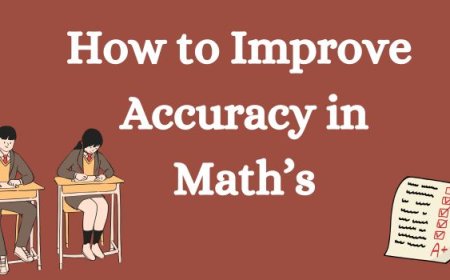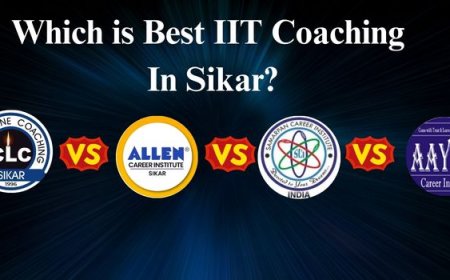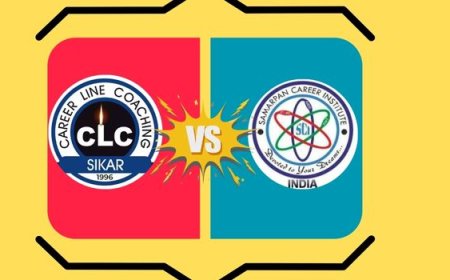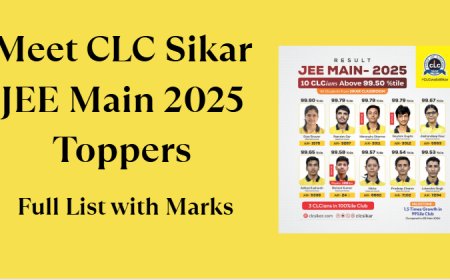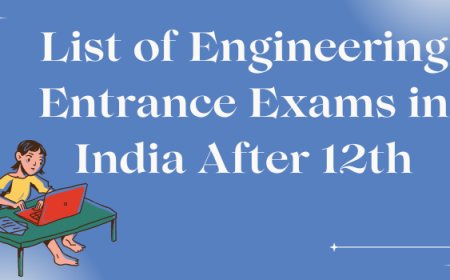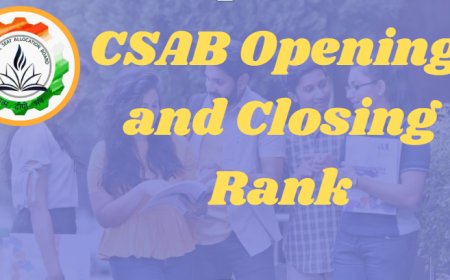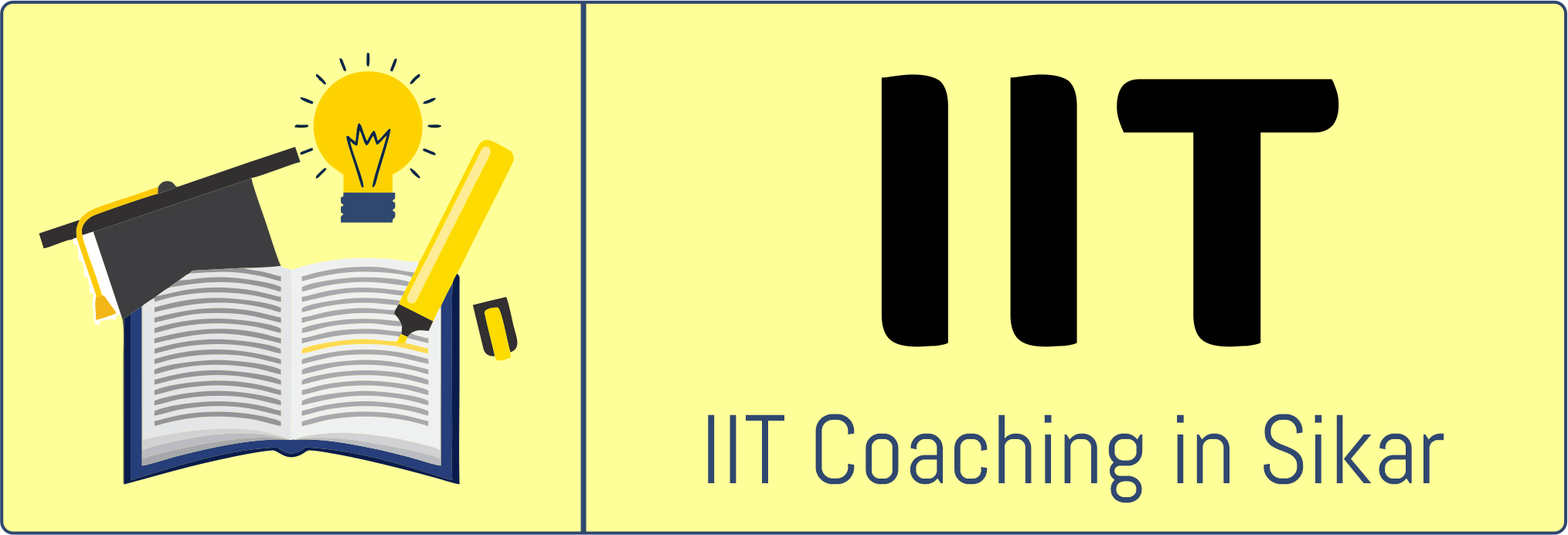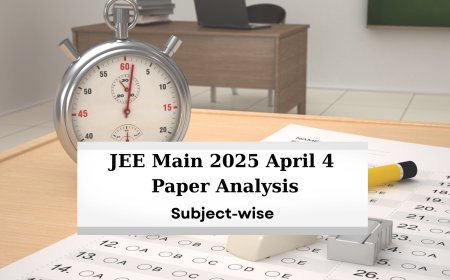JEE Main 2026 Syllabus PDF – Subject-Wise Topics to Download Now
Download JEE Main 2026 syllabus PDF with complete subject-wise topics for Physics, Chemistry, and Maths. Get the latest NTA syllabus here.

JEE Main 2026 Syllabus: Usually, the highly competitive trend of JEE Main 2026, similar to that of the previous years, will be the entrance mode to admissions in the elite engineering schools such as the NITs, IIITs, and GFTIs. Lakhs of students are geared up to take the JEE MAIN 2026, and to make preparation smart and effective, it is important to know the Syllabus of JEE MAIN 2026 in detail.
In this article, we are providing the full topic-wise location of the JEE MAIN 2026 SYLLABUS, giving insights on the essential topics, and in this article, we provide a link where we can download the JEE Main 2026 PDF syllabus.
Read More: How to Crack JEE Mains in the First Attempt
JEE MAIN 2026 – Exam Overview
|
Particulare |
JEE Main 2026 |
|
Exam Conducting Body |
National Testing Agency |
|
Paper |
Paper 1: B.Teach/ B.E Paper 2: B.Arch Paper 2:B.Planner |
|
Mode Of Exam |
Computer-Based Test (CBT) |
|
Offical Website |
JEE Main Syllabus 2026 PDF Download
The JEE MAIN 2026 syllabus in PDF contains subject-wise topics of Physics, Chemistry, and Mathematics based on NTA. As soon as they are released, the official JEE MAIN 2026 PDF document can be downloaded by the candidates visiting jeemain.nta.nic.in, so they can organize their preparation to cover all the crucial topics without omitting anything. The syllabus of JEE MAIN 2026 PDF is available on the official NTA webpage, which can be downloaded so that it becomes easier to prepare.
JEE MAIN 2026 SYLLABUS PDF (link will appear here after the official notification by NTA)
JEE Mains Syllabus 2026 for Physics
This is the syllabus of Physics in the JEE Main 2026 exam, which consists of both theoretical and practical chapters. Section B will focus on your experimentation and observation skills with practical-based questions. There is a need for high knowledge of formulas and the ability to conceptualize.
JEE Main Physics Syllabus 2026 PDF
|
Unit |
Topics |
|
Physics and Measurement |
Units of measurements, System of units, SI Units, fundamental and derived units, least count, significant figures, Errors in measurement, Errors and Significant Figures, Dimensions of Physics quantities, dimensional analysis and its applications. |
|
Laws of Motion |
Newton’s first law of motion, momentum, Force, and inertia, Newton’s second law of motion, impulse, Newton’s third Law of motion. Law of conservation of linear momentum and its applications, equilibrium of concurrent forces. Static and Kinetic friction, laws of friction, rolling friction. Dynamics of uniform circular motion, centripetal force, and its applications: vehicle on a level circular road, vehicle on a banked road. |
|
Kinematics |
The frame of reference, motion in a straight line, speed and velocity, uniform and non-uniform motion, average speed and instantaneous velocity, uniformly accelerated motion, velocity-time, position-time graph, relations for uniformly accelerated motion, relative velocity. Motion in a plane, projectile motion, uniform circular motion |
|
Gravitation |
The universal law of gravitation, Acceleration due to gravity, and its variation with altitude and depth. Kepler's law of planetary motion. Gravitational potential energy, gravitational potential, Escape velocity, motion of a satellite, orbital velocity, period, and energy of a satellite. |
|
Work, Energy, and Power |
Constant force and a variable force, kinetic and potential energies, work-energy theorem, and power. The potential energy of a spring, conservation of mechanical energy, conservative and non-conservative forces, and motion in a vertical circle. Elastic and inelastic collisions in one and two dimensions. |
|
Rotational Motion |
Centre of mass of a two-particle system, centre of mass of a rigid body. Basic concepts of rotational motion, moment of a force, torque, angular momentum, conservation of angular momentum, and their applications. The moment of inertia, the radius of gyration, values of moments of inertia for simple geometrical objects, parallel and perpendicular axes theorems, and their applications. Equilibrium of rigid bodies, rigid body rotation, and equations of rotational motion, comparison of linear and rotational motions. |
|
Properties of Solids and Liquids |
Elastic behaviour, stress-strain relationship, Hooke's Law, Young's modulus, bulk modulus, and modulus of rigidity. Pressure due to a fluid column, Pascal's law and its applications, effect of gravity on fluid pressure, viscosity, Stokes’ law, terminal velocity, streamline and turbulent flow, critical velocity, Bernoulli's principle and its applications. Surface energy and surface tension, angle of contact, excess of pressure across a curved surface, application of surface tension: drops, bubbles, and capillary rise. Heat, temperature, thermal expansion, specific heat capacity, calorimetry, change of state, and latent heat. Heat transfer: conduction, convection, and radiation. |
|
Kinetic Theory of Gases |
Equation of state of a perfect gas, work done on compressing a gas, kinetic theory of gases: assumptions, the concept of pressure, kinetic interpretation of temperature, RMS speed of gas molecules, degrees of freedom, law of equipartition of energy and applications to specific heat capacities of gases, mean free path, Avogadro's number. |
|
Oscillations and Waves |
Oscillations and periodic motion: period, frequency, displacement as a function of time, periodic functions. Simple harmonic motion (S.H.M.) and its equation, phase, oscillations of a spring: restoring force and force constant, energy in S.H.M.: kinetic and potential energies, simple pendulum: derivation of expression for its period. Wave motion, longitudinal and transverse waves, speed of the travelling wave, displacement relation for a progressive wave. |
|
Thermodynamics |
Thermal equilibrium and the concept of temperature, the zeroth law of thermodynamics, heat, work, and internal energy. The first law of thermodynamics, isothermal and adiabatic processes. The second law of thermodynamics: reversible and irreversible processes. |
|
Electrostatics |
conservation of charge, Coulomb's law forces between two point charges, forces between multiple charges, superposition principle, and continuous charge distribution. Electric field: electric field due to a point charge, electric field lines, electric dipole, electric field due to a dipole, torque on a dipole in a uniform electric field. Electric flux, Gauss's law, and its applications to find fields due to an infinitely long uniformly charged straight wire, a uniformly charged infinite plane sheet, and a uniformly charged thin spherical shell. Electric potential and its calculation for a point charge, electric dipole, and system of charges, potential difference, equipotential surfaces, electrical potential energy of a system of two point charges, and an electric dipole in an electrostatic field. Conductors and insulators, dielectrics and electric polarization, capacitors and capacitance, the combination of capacitors in series and parallel, and capacitance of a parallel plate capacitor with and without a dielectric medium between the plates, energy stored in a capacitor. |
|
Magnetic Effects of Current and Magnetism |
Biot-Savart law and its application to the current carrying circular loop, Ampere's law and its applications to infinitely long current carrying straight wire and solenoid. Force on a moving charge in uniform magnetic and electric fields, force on a current-carrying conductor in a uniform magnetic field, the force between two parallel currents carrying conductors-definition of ampere, torque experienced by a current loop in a uniform magnetic field: Moving coil galvanometer, its sensitivity, and conversion to ammeter and voltmeter. Current loop as a magnetic dipole and its magnetic dipole moment, bar magnet as an equivalent solenoid, magnetic field lines, magnetic field due to a magnetic dipole (bar magnet) along its axis and perpendicular to its axis, torque on a magnetic dipole in a uniform magnetic field, para-, dia- and ferromagnetic substances with examples, the effect of temperature on magnetic properties |
|
Electromagnetic Induction and Alternating Currents |
Electromagnetic induction: Faraday's law, induced emf and current, Lenz’s law, eddy currents, self and mutual inductance. Alternating currents, peak and RMS value of alternating current/voltage, reactance and impedance, LCR series circuit, resonance, power in AC circuits, wattless current, AC generator, nd transformer. |
|
Electromagnetic Waves |
Displacement current, electromagnetic waves and their characteristics, transverse nature of electromagnetic waves, electromagnetic spectrum(radio waves, microwaves, infrared, visible, ultraviolet, X-rays, Gamma rays), applications of electromagnetic waves. |
|
Electronic Devices |
Semiconductor diode: I-V characteristics in forward and reverse bias, diode as a rectifier; I-V characteristics of LED, the photodiode, solar cell, Zener diode, Zener diode as a voltage regulator. Logic gates (OR, AND, NOT, NAND, and NOR). |
|
Atoms and Nuclei |
Alpha-particle scattering experiment, Rutherford's model of the atom, Bohr model, energy levels, hydrogen spectrum. Composition and size of nucleus, atomic masses, mass-energy relation, mass defect, binding energy per nucleon, and its variation with mass number, nuclear fission, and fusion. |
|
Dual Nature of Matter and Radiation |
Dual nature of radiation, Photoelectric effect, Hertz and Lenard's observations, Einstein's photoelectric equation, particle nature of light. Matter waves: wave nature of particle, de Broglie relation. |
JEE Mains Syllabus 2026 for Chemistry
The Chemistry section is subdivided into Physical, Organic, and Inorganic Chemistry. The mastery of Chemistry in JEE Main is mostly performed with NCERT textbooks. It is important to know how to react and solve mathematical tasks. The field of chemistry can be divided into three broad categories, which include Physical Chemistry, Organic Chemistry, and Inorganic Chemistry.
JEE Main Chemistry Syllabus 2026 PDF
|
Unit |
Topics |
|
SOME BASIC CONCEPTS IN CHEMISTRY |
Basic concept of Matter and its nature, Dalton's atomic theory, Concept of atom, molecule, element and compound, Laws of chemical combination, Atomic and molecular masses, mole concept, molar mass, percentage composition, empirical and molecular formulae, Chemical equations and stoichiometry. |
|
CHEMICAL BONDING AND MOLECULAR STRUCTURE |
Kossel-Lewis approach to chemical bond formation, the concept of ionic and covalent bonds. Ionic Bonding: Formation of ionic bonds, factors affecting the formation of ionic bonds; calculation of lattice enthalpy. Covalent Bonding: Concept of electronegativity, Fajan’s rule, dipole moment, Valence Shell Electron Pair Repulsion (VSEPR ) theory, and shapes of simple molecules. Quantum mechanical approach to covalent bonding: Valence bond theory - its important features, the concept of hybridization involving s,p, and d orbitals, and resonance. Molecular Orbital Theory - Its important features, LCAOs, types of molecular orbitals (bonding, antibonding), sigma and pi-bonds, molecular orbital electronic configurations of homonuclear diatomic molecules, the concept of bond order, bond length, and bond energy. An elementary idea of metallic bonding, hydrogen bonding, and their applications. |
|
ATOMIC STRUCTURE |
Nature of electromagnetic radiation, photoelectric effect, spectrum of the hydrogen atom, Bohr model of a hydrogen atom - its postulates, derivation of the relations for the energy of the electron and radii of the different orbits, limitations of Bohr's model, dual nature of matter, de Broglie's relationship, Heisenberg uncertainty principle, elementary ideas of quantum mechanics, the quantum mechanical model of the atom and its important features, concept of atomic orbitals as one-electron wave functions, variation of ψ and ψ 2 with r for 1s and 2s orbitals, various quantum numbers (principal, angular momentum and magnetic quantum numbers) and their significance, shapes of s, p and d - orbitals, electron spin and spin quantum number, rules for filling electrons in orbitals – Aufbau principle, Pauli's exclusion principle andHund'srule, electronic configuration of elements and extra stability of half-filled and filled orbitals |
|
EQUILIBRIUM |
The meaning of equilibrium is the concept of dynamic equilibrium. Equilibria involving physical processes: Solid-liquid, liquid-gas, gas-gas, and solid-gas equilibria, Henry's law. General characteristics of equilibrium involving physical processes. Equilibrium involving chemical processes: Law of chemical equilibrium, equilibrium constants Kp and Kcc, and their significance, the significance of ΔG and ΔG° in chemical equilibrium, factors affecting equilibrium concentration, pressure, temperature, the effect of a catalyst, Le Chatelier’s principle. Ionic equilibrium: Weak and strong electrolytes, ionization of electrolytes, various concepts of acids and bases (Arrhenius, Bronsted - Lowry and Lewis) and their ionization, acid-base equilibria (including multistage ionization) and ionization constants, ionization of water, pH scale, common effect, hydrolysis of salts and pH of their solutions, the solubility of sparingly soluble salts, solubility products and buffer solutions. |
|
CHEMICAL THERMODYNAMICS |
Fundamentals of thermodynamics: System and surroundings, extensive and intensive properties, state functions, entropy, types of processes. The first law of thermodynamics - Concept of work, heat, internal energy and enthalpy, heat capacity, molar heat capacity, Hess’s law of constant heat summation, Enthalpies of bond dissociation, combustion, formation, atomization, sublimation, phase transition, hydration, ionization, and solution. The second law of thermodynamics - Spontaneity of processes, ΔS of the universe, and ΔGof the system as criteria for spontaneity. ΔG°(Standard Gibbs energy change) and equilibrium constant. |
|
CHEMICAL KINETICS |
Rate of a chemical reaction, factors affecting the rate of reactions: concentration, temperature, pressure and catalyst, elementary and complex reactions, order and molecularity of reactions, rate law, rate constant and its units, differential and integral forms of zero and first-order reactions, their characteristics and half-lives, the effect of temperature on the rate of reactions, Arrhenius theory, activation energy and its calculation, collision theory of bi-molecular gaseous reactions (no derivation). |
|
REDOX REACTIONS AND ELECTROCHEMISTRY |
Electronic concepts of oxidation and reduction, redox reactions, oxidation number, rules for assigning oxidation number, and balancing of redox reactions. Electrolytic and metallic conduction, conductance in electrolytic solutions, molar conductivities and their variation with concentration, Kohlrausch’s law and its applications. Electrochemical cells - Electrolytic and Galvanic cells, different types of electrodes, electrode potentials including standard electrode potential, half-cell and cell reactions, emf of a Galvanic cell and its measurement, Nernst equation and its applications, relationship between cell potential and Gibbs' energy change, dry cell and lead accumulator, fuel cells. |
JEE Main Syllabus 2026 For Organic Chemistry
|
Unit |
Topic |
|
SOME BASIC PRINCIPLES OF ORGANIC CHEMISTRY |
Tetravalency of carbon, shapes of simple molecules - hybridization (s and p): classification of organic compounds based on functional groups and those containing halogens, oxygen, nitrogen, and sulphur, homologous series: Isomerism - structural and stereoisomerism. Nomenclature (Trivial and IUPAC) Covalent bond fission - Homolytic and heterolytic, free radicals, carbocations and carbanions, stability of carbocations and free radicals, electrophiles and nucleophiles. Electronic displacement in a covalent bond - Inductive effect, electromeric effect, resonance, and hyperconjugation. Common types of organic reactions: Substitution, addition, elimination, and rearrangement. |
|
PURIFICATION AND CHARACTERISATION OF ORGANIC COMPOUNDS |
Purification - Crystallization, sublimation, distillation, differential extraction, and chromatography- principles and their applications. Qualitative analysis - Detection of nitrogen, sulphur, phosphorus, and halogens. Quantitative analysis (basic principles only) - Estimation of carbon, hydrogen, nitrogen, halogens, sulphur, and phosphorus. Calculations of empirical formulae and molecular formulae, numerical problems in organic quantitative analysis, |
|
ORGANIC COMPOUNDS CONTAINING HALOGENS |
General methods of preparation, properties and reactions, nature of C-X bond, mechanisms of substitution reactions. Uses, environmental effects of chloroform, iodoform, freons, and DDT. |
|
ORGANIC COMPOUNDS CONTAINING OXYGEN |
General methods of preparation, properties, reactions, and uses. ALCOHOLS, PHENOLS, AND ETHERS Alcohols: Identification of primary, secondary, and tertiary alcohols, mechanism of dehydration. Phenols: Acidic nature, electrophilic substitution reactions, halogenation, nitration, and sulphonation, Reimer-Tiemann reaction. Ethers: Structure. Aldehyde and Ketones: Nature of carbonyl group, nucleophilic addition to > C=O group, relative reactivities of aldehydes and ketones, important reactions such as - Nucleophilic addition reactions(addition of HCN, NH3 and its derivatives), Grignard reagent, oxidation, reduction (Wolf Kishner andClemmensen), the acidity of α-hydrogen. Aldol condensation, Cannizzaro reaction, Haloform reaction, chemical tests to distinguish between aldehydes and ketones. Carboxylic Acids: Acidic strength and factors affecting it |
|
PRINCIPLES RELATED TO PRACTICAL CHEMISTRY |
Detection of extra elements (Nitrogen, sulphur, halogens) in organic compounds, detection of the following functional groups: hydroxyl (alcoholic and phenolic), carbonyl (aldehyde and ketones), carboxy, and amino groups in organic compounds. The chemistry involved in the preparation of the following: Inorganic compounds, Mohr’s salt, potash alum. Organic compounds: Acetanilide, p-nitro acetanilide, aniline yellow, iodoform. The chemistry involved in the titrimetric exercises – acids, bases, and the use of indicators, oxalic acid vs KMnO4, Mohr’s salt vs KMnO4. Chemical principles involved in the qualitative salt analysis: Cations – Pb²⁺, Cu²⁺, Al³⁺, Fe³⁺, Zn²⁺, Ni²⁺, Ca²⁺, Ba²⁺, Mg²⁺, NH₄⁺ Anions – CO₃²⁻, S²⁻, SO₄²⁻, NO₃⁻, NO₂⁻, Cl⁻, Br⁻, I⁻ ( Insoluble salts excluded). Chemical principles involved in the following experiments: 1. Enthalpy of solution of CuSO4 2. Enthalpy of neutralization of strong acid and strong base. 3. Preparation of lyophilic and lyophobic sols. 4. Kinetic study of the reaction of iodide ions with hydrogen peroxide at room temperature |
JEE Main Syllabus 2026 For Inorganic Chemistry
|
Unit |
Topics |
|
CLASSIFICATION OF ELEMENTS AND PERIODICITY IN PROPERTIES |
Modern periodic law and present form of the periodic table, s, p., d, and f block elements, periodic trends in properties of elements of atomic and ionic radii, ionization enthalpy, electron gain enthalpy, valence, oxidation states, and chemical reactivity. |
|
COORDINATION COMPOUNDS |
Introduction to coordination compounds. Werner's theory, ligands, coordination number, denticity, chelation, IUPAC nomenclature of mononuclear coordination compounds, isomerism, Bonding: Valencebond approach and basic ideas of Crystal field theory, colour and magnetic properties, importance of coordination compounds (in qualitative analysis, extraction of metals and in biological systems). |
|
p- BLOCK ELEMENTS |
Group -13 to Group 18 Elements General Introduction: Electronic configuration and general trends in physical and chemical properties of elements across the periods and down the groups, unique behaviour of the first element in each group. |
|
d- BLOCK ELEMENTS |
Transition Elements - General introduction, electronic configuration, occurrence and characteristics, general trends in properties of the first-row transition elements - physical properties, ionization enthalpy, oxidation states, atomic radii, colour, catalytic behaviour, magnetic properties, complex formation, interstitial compounds, alloy formation, preparation, properties and uses of K2Cr2O7 and KMnO4. Inner Transition Elements Lanthanoids - Electronic configuration, oxidation states, and Lanthanoid contraction. Actinoids - Electronic configuration and oxidation states. |
JEE Mains Syllabus 2026 for Maths
The mathematics syllabus emphasises in-depth learning and applications of concepts. The book is studded with important chapters such as Sets, Functions, Algebra, Calculus, Coordinate Geometry, 3D Geometry, and Probability. It is the potent section that needs good skills in problem-solving and regular training. The precision and swiftness are significant when it comes to high scoring.
JEE Main Maths Syllabus 2026 PDF
|
Unit |
Topics |
|
COMPLEX NUMBERS AND QUADRATIC EQUATIONS |
Complex numbers as ordered pairs of reals, Representation of complex numbers in the forma +iband their representation in a plane, Argand diagram, algebra of complex numbers, modulus and argument (or amplitude) of a complex number, Quadratic equations in real and complex number systems and their solutions; Relations between roots and coefficients, nature of roots, the formation of quadratic equations with given roots. |
|
SETS, RELATIONS, AND FUNCTIONS |
Sets and their representation; Union, intersection, and complement of sets and their algebraic properties; Power set; Relations, types of relations, equivalence relations, functions; one-one, in, to, and onto functions, the composition of functions. |
|
SEQUENCE AND SERIES |
Arithmetic and Geometric progressions, insertion of arithmetic, geometric means between two given numbers, Relation between A.M and G.M |
|
BINOMIAL THEOREM AND ITS SIMPLE APPLICATIONS |
Binomial theorem for a positive integral index, general term, and middle term, and simple applications. |
|
MATRICES AND DETERMINANTS |
Matrices, algebra of matrices, types of matrices, determinant, and matrices of order two and three, evaluation of determinants, area of triangles using determinants; Adjoint and inverse of a square matrix; Test of consistency and solution of simultaneous linear equations in two or three variables using matrices |
|
LIMIT, CONTINUITY, AND DIFFERENTIABILITY |
Real–valued functions, algebra of functions; polynomial, rational, trigonometric, logarithmic, and exponential functions; inverse functions. Graphs of simple functions. Limits and differentiability. Differentiation of the sum, difference, product, and quotient of two functions. Differentiation of trigonometric, inverse trigonometric, logarithmic, exponential, composite, and implicit functions; derivatives of order up to tw.Applications of derivatives: Rate of change of quantities, monotonic increasing and decreasing functions, Maxima and minima of functions of one variable. |
|
SEQUENCE AND SERIES |
Arithmetic and Geometric progressions, insertion of arithmetic, geometric means between two given numbers, Relation between A.M and G.M |
|
INTEGRAL CALCULUS |
Integral as an anti-derivative, Fundamental integrals involving algebraic, trigonometric, exponential, and logarithmic functions. Integration by substitution, by parts, and by partial fractions. Integration using trigonometric identities. Evaluation of simple integrals of the type |
|
DIFFERENTIAL EQUATIONS |
Ordinary differential equations, their order and degree, the solution of a differential equation by the method of separation of variables, the solution of a homogeneous and linear differential equation of the type |
|
THREE-DIMENSIONAL GEOMETRY |
Coordinates of a point in space, the distance between two points, section formula, direction ratios and direction cosines, and the angle between two intersecting lines. Equation of a line, Skewlines, the shortest distance between them, and their equation. |
|
CO-ORDINATE GEOMETRY |
Cartesian system of rectangular coordinates in a plane, distance formula, section formula, locus and situation, the slope of a line, parallel and perpendicular lines, intercepts of a line on the coordinate axis. Straight line: Various forms of equations of a line, intersection of lines, angles between two lines, conditions for concurrence of three lines, the distance of a point from a line, coordinates of the centroid, orthocentre, and circumcentre of a triangle. Circle, conic sections: A standard form of equations of a circle, the general form of the equation of a circle, its radius and centre, equation of a circle when the endpoints of a diameter are given, points of intersection of a line and a circle with the centre at the origin and sections of conics, equations of conic sections(parabola, ellipse and hyperbola) in standard forms. |
|
VECTOR ALGEBRA |
Vectors and scalars, the addition of vectors, components of a vector in two and three-dimensional spaces, scalar and vector products. |
|
TRIGONOMETRY |
Trigonometrical identities and trigonometrical functions, inverse trigonometrical functions, and their properties. |
|
STATISTICS AND PROBABILITY |
Measures of dispersion: calculation of mean, median, mode of grouped and ungrouped data, calculation of standard deviation, variance, and mean deviation for grouped and ungrouped data. Probability: Probability of an event, addition and multiplication theorems of probability, Bayes' theorem, probability distribution of a random variable. |
Read More: How to Increase Marks in JEE Main 2026: Expert Guide
JEE MAIN 2026 Preparation Tips Based on Syllabus
The PDF has comprehensive chapters about all three subjects, Physics, Chemistry, and Mathematics, as well as examination pattern, mark scheme, and instructions.
Know the Weightage: devote more time to the weighted chapters like Electrostatics (Physics), Calculus (Maths), and Coordination Compounds (Chemistry).
NCERT First: NCERT First: Chemistry: NCERT is the first textbook you must go to.
Mock Tests: Take full-length mock exams regularly to practice time management and topic retention.
Rew expos and Notes: Make summary notes in formulas, reactions, and important points.
Previous Year Papers: After solving past year questions, you will get a feel of the JEE Main pattern and get more confident about solving them.
JEE Main 2026 Exam Pattern
|
Subject |
No. of Questions |
Marks |
|
Physics |
25 |
100 |
|
Mathematics |
25 |
100 |
|
Chemistry |
25 |
100 |
|
Total |
75 Question |
300 Marks |
For Correct Answer: +4 Marks
For Incorrect Answer: -1 Marks
Numerical questions: no negative marking
JEE MAIN 2026 – Topics Removed from Syllabus
NTA might make minor changes in the syllabus once a year and occasionally drop/ de-emphasise chapters, keeping in mind changes in the CBSE or NCERT syllabus. Subscribe to the official site and find out whether some of the topics will be explicitly omitted in the JEE MAIN 2026 SYLLABUS
Conclusion
Knowing the full JEE MAIN 2026 SYLLABUS is an essential process of making a deep preparation. Follow the schedule, revise with consistency, and get the JEE MAIN 2026 PDF by downloading the official PDF to plan the syllabus out in detail. Be updated by the NTA portal and keep in mind that clarity, consistency, and revision are the only keys to cracking JEE Main.
FAQs – JEE MAIN 2026 SYLLABUS
Q1. Is the JEE MAIN 2026 syllabus the same as 2025?
Ans. Generally, it is yes, but candidates must consult the formal notification in order to see in case there are any changes or updates in topics.
Q2. Is NCERT enough for the JEE MAIN 2026 SYLLABUS?
Ans. Chemistry and concepts are very well done by NCERT; however, it is advised that reference book work should be done on Physics and Maths to strengthen knowledge.
Q3. Will there be any topics removed from JEE MAIN 2026?
Ans. NTA has not formally stated that there are any removals. Applicants should be careful with asking official updates about the changes, and it is important to keep in mind that clarity, consistency, and revision are the trick to cracking JEE Main.
What's Your Reaction?










